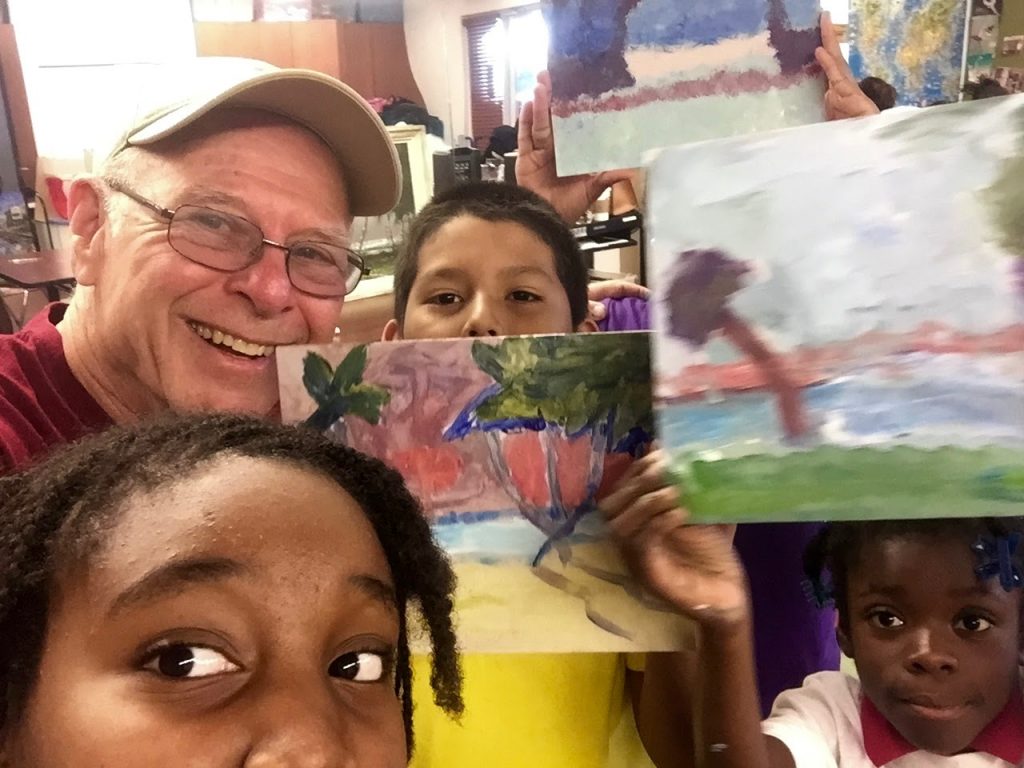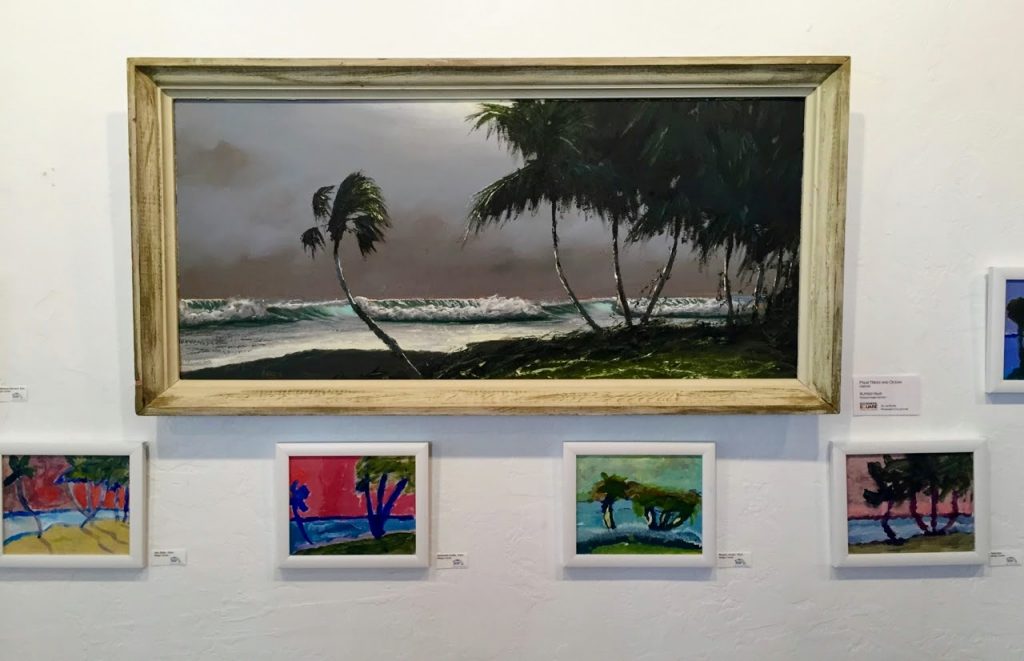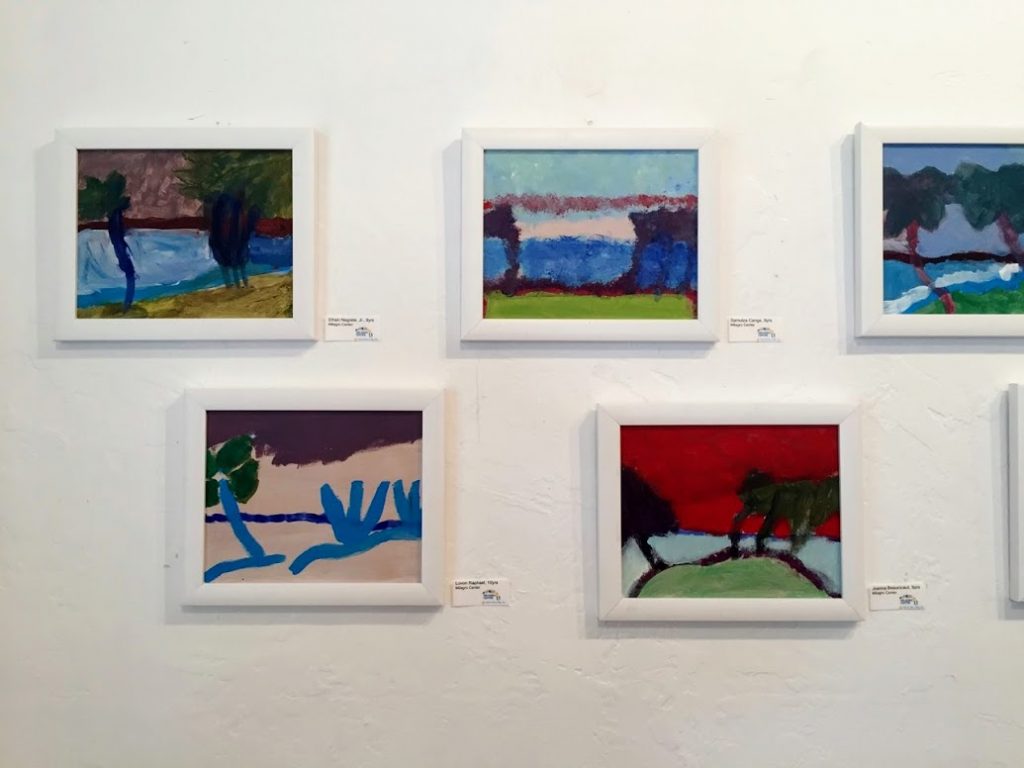
By Lucy Lazarony
The Cornell Art Museum at Old School Square and the Milagro Center have come together for an exhibit in honor of Black History Month.
One part honors Florida’s past — with stunning paintings by the Highwaymen, African-American artists who beginning in the 1950’s captured Florida’s lush landscapes and seascapes and wildlife. often with bright daring colors.
Their equipment was spare, painting on boards rather than canvas, but their vision and capacity to capture the beguiling natural beauty of Florida was not.
Their paintings, sold for $25 or $35, are worth thousands today.
And one part honors Florida’s future with the young artists from the Milagro Center, using a painting by Highwayman Alfred Hair as a jumping-off point for their own artistic visions and imaginations.
The works by the young artists are compelling, bright and daring, and joyful, some with a sense of composition belying their young ages.
The Milagro students took over the First Friday art walk on Feb. 3 with young artists posing and answering questions about their paintings and then stepping into the next room to put on a concert.
“Our stars took over the music,” says Nicole Escalera Griffin, cultural arts director at the Milagro Center. “They were running the show.”

And they were holding forth about their art. Stephanie Watson of the Cornell Art Museum recalls the artists arriving with some very important instructions for the museum including “Don’t sell my piece” and “Please hang it so no one touches it.”
“These kids aren’t shy,” Escalera Griffin recalls of opening night. “A kid is talking to whole family about the artwork.”
Their art and the works of the Florida Highwaymen artists Alfred Hair, Charlie Daniel, Livingston Roberts, Mary Ann Carroll and James Gibson and two works by A.E. “Beanie” Backus, a white landscape artist living in Fort Pierce and a mentor to the first two Highwaymen, Hair and Harold Newton, will be on display at the Cornell Art Museum through the end of the month.
The Highwaymen sold their art along Florida’s byways and from the backs of cars. The turn around time from creating art to sale was quick, sometimes before the oil paint was finished drying.
Despite the obstacles of living in a then-segregated Florida, the Highwaymen and their art were able to flourish.

The young artists from the Milagro Center had their paints ready when Delray Beach artist Ralph Papa and the folks from the Cornell Museum arrived one afternoon in January with a painting by Hair for inspiration.
“I told them it’s a beach scene, palm trees on a beach and sand and sky,” explains Papa. “You can vary the colors; use your imagination. And they did a wonderful job.”
They finished their paintings in one lesson and were ready for the next subject —this time a ballerina — for their second lesson.
“He taught them how to paint a ballerina, which is neat because our kids receive ballet instruction,” Escalera Griffin says.
The Highwaymen, who also worked fast, would have been proud.
Where will the 20 paintings from the young artists at the Milagro Center be headed next? They are headed home.
“We are going to give them back to the children,” Escalera Griffin says.
As for the art of the Highwaymen and their mentor, three paintings have a home in the Cornell Museum’s permanent collection. The rest are on loan from private collectors.
Come the first Friday in March the space will be filled with the art of Carin Wagner, in an exhibition titled Reflect. Wagner’s oil paintings invite the viewer to reflect on two precious resources, trees and water. Fabricated, an exhibit of contemporary fiber art, runs through April 23 with an art talk by artist Amy Gross scheduled for March 9 from 5:30 p.m. to 7:30 p.m.
Museum hours at the Cornell Art Museum are Tuesday through Saturday from 10 a.m. to 4:30 pm and Sunday from 1 to 4:30 p.m.. Admission is a suggested $5 donation. The museum is located on the campus of Old School Square, 51 N. Swinton Ave., in downtown Delray Beach.